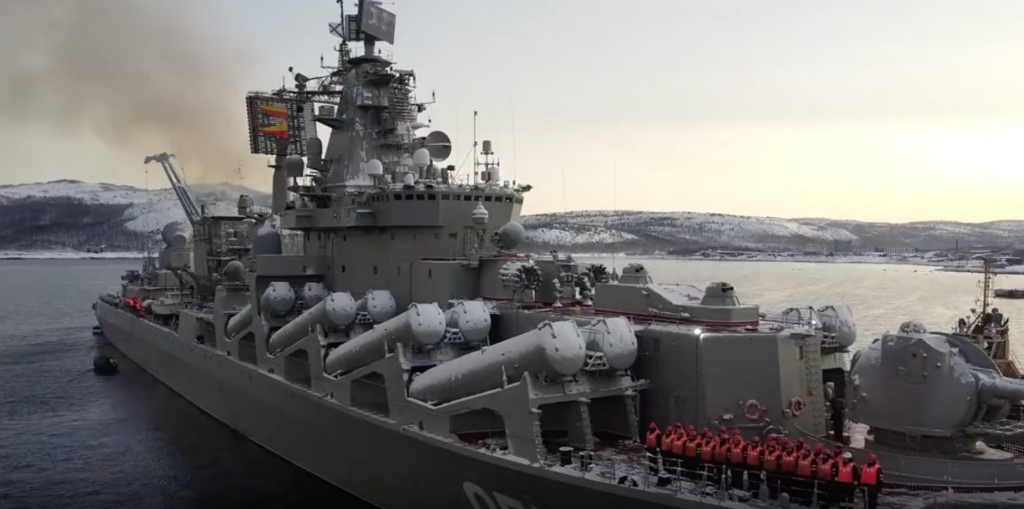Over the past several weeks, Russia has mobilized a significant portion of its navy, deploying 140 ships, which represent about 40% of its total combatant strength, to the Baltic, Black Sea, and Pacific and on joint military exercises with other nations. This sudden out-flux is seen as a response to heightening tensions between the West and Russia over Ukraine and its future orientation, Pro-Western or Pro-Russian.
Just this past week on January 27th, Russia concluded their Peaceful Sea 2022 training exercise with the Chinese navy, which involved close cooperation between Russian and Chinese air and surface combat assets to locate and liberate a captured cargo ship which was simulated by the Russian oil tanker Boris Butoma. Drills of this sort help build interoperability and cooperation between the participating nations’ navies. The specific focus of this exercise was building such collaboration in the realm of anti-piracy and sea patrol operations. Similar training drills were conducted between Russia, China, and Iran in the Arabian sea as part of another joint military exercise called the 2022 Marine Security Belt. In addition, Russia has sent over 30 ships to conduct exercises in the Black Sea, 20 ships to conduct exercises in the Baltic sea, and several tactical groups to conduct drills and exercises in the North Atlantic.
These drills and the unprecedented level of activity in the Russian navy, as well as the growing close cooperation between Russian and Chinese naval forces, have alarmed Western defense analysts, especially with the current high level of tension between Western powers, including the United States, and the Russians over Ukraine. And for good reason. Historically, military drills have been used as a sort of saber-rattling and posturing used by nations to highlight the strength of their military and their allies’ military to deter aggression and enforce their own interest through the threat of overwhelming military force. Additionally, these drills help build proficient interoperability, grant the opportunity to test and refine war-fighting strategies, and provide a ready supply of deployed ships that can react swiftly should tensions escalate into a crisis.
As a result, western nations have been speeding up the deployment of their own naval asset and conducting their own joint military exercises to prepare for possible conflict while sending ships, aircraft, and submarines to shadow Russian naval forces.
Both sides have condemned the steps of the other as blatant provocations which threaten global security, but neither seems to be backing down. The Irish South and West Fish Producers Organization a union of all fishermen in the Republic of Ireland had the most interesting condemnation. This condemnation occurred after Russia announced it would be conducting live-fire naval exercises off the coast of Ireland, inside Irelands Exclusive Economic Zone (EEC), and near one of Ireland’s prime fishing grounds. In response to this threat, top Irish Governmental officials in Ireland condemned the move but would take no action. According to a report published by the United States Naval Institute – a nonprofit professional military association dedicated to Naval news and defense policy – the chief executive of the Irish South and West Fish Producers Organization, Patrick Murphy, responded, “We are letting them know that we will be fishing in our traditional fishing areas and if this has an impact on their exercise this would be considered a peaceful protest.” Patrick Murphy also commented that “[they] should be entitled to go fishing there, and if we’re fishing there then these boats, these warships, shouldn’t be having war games” and pledged to disrupt the exercise.
The Russian government responded by moving the drills to outside Irelands Exclusive Economic Zone (EEZ), saying they did it as a gesture of respect and goodwill towards the Irish government.
With this many warships on the high seas and in such close proximity to one another, coupled with governments on both sides of the Atlantic becoming further entrenched in their negotiating position, tensions are running at an all-time high. It remains to be seen if the intensive negotiations currently underway will be able to maintain the peace and return some form of normalcy to Ukraine.

